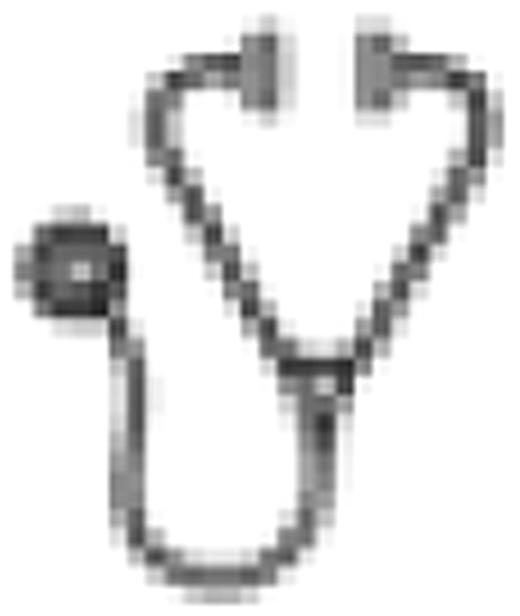Abstract
Dasatinib, a potent inhibitor of ABL and SRC, is approximately 300 times more potent than imatinib in vitro and has significant activity in pts with CML-CP resistant or intolerant of imatinib (IM). We initiated a phase II trial to study efficacy and safety of dasatinib in pts with previously untreated CML-CP.
To investigate the efficacy and safety of dasatinib as initial therapy for patients with CML-CP.
The primary objective was to estimate the proportion of pts attaining major molecular response at 12 months (mo). Pts with previously untreated CML-CP within 6 months from diagnosis were eligible and received dasatinib 100 mg/day, randomized to either 50 mg-twice-daily (BID) or a 100 mg-once-daily (QD).
Sixty-two pts have been enrolled (31 on the QD schedule, 31 BID). Median age was 47 years (yrs) (range 18–76 yrs). Median follow-up is 24 months (mo) (range, 1 to 39 mo). All 45 pts who were not in CHR at the start of therapy achieved CHR. Among 50 pts followed for at least 3 months, 49 (98%) achieved complete cytogenetic response (CCyR). Major molecular response has been achieved in 35 (70%), including 5 (10%) with complete molecular response. The CCyR rate at different timepoints (intention-to-treat) compares favorably to that observed in historical controls treated with imatinib 400mg or 800 mg daily:
| Mo on therapy . | Percent with CCyR . | ||
|---|---|---|---|
| Dasatinib . | Imatinib . | Imainib . | |
| Dasatinib | Imatinib 400mg | Imatinib 800mg | |
| 3 | 82 | 37 | 63 |
| 6 | 94 | 54 | 85 |
| 12 | 98 | 65 | 89 |
| 18 | 89 | 67 | 89 |
| 24 | 84 | 67 | 88 |
| 30 | 83 | 67 | 89 |
| Mo on therapy . | Percent with CCyR . | ||
|---|---|---|---|
| Dasatinib . | Imatinib . | Imainib . | |
| Dasatinib | Imatinib 400mg | Imatinib 800mg | |
| 3 | 82 | 37 | 63 |
| 6 | 94 | 54 | 85 |
| 12 | 98 | 65 | 89 |
| 18 | 89 | 67 | 89 |
| 24 | 84 | 67 | 88 |
| 30 | 83 | 67 | 89 |
Major molecular response was achieved by 45% by 12 mo and 71% by 24 mo (corresponding rates with imatinib 400mg 34% and 55%, and with imatinib 800mg 58% and 66%, respectively). There was a trend for higher MMR rate with the QD schedule: overall 75% vs 65% (p=0.54), and by 12 months 52% and 38% (p=0.54). Grade 3-4 non-hematologic toxicity (regardless of causality) included fatigue (6%), pain (muscle or joint) (6%), dyspnea, neuropathy and memory impairment (5% each). Pleural effusion occurred in 13% evaluable pts (grade 3-4 in 2%). Grade 3-4 hematologic toxicity (transient) included thrombocytopenia 10%, neutropenia 21%, and anemia 6%. Thirty (48%) of 62 pts required transient treatment interruptions. The actual median daily dose for all pts was 100mg. There is no significant difference in grade 3-4 toxicity by treatment schedule but there was a trend for less pleural effusion with QD (3%) vs BID (10%; p=0.26). Three pts lost CCyR: 2 because of non-compliance, 1 due to treatment interruption because of pleural effusion. 24 month EFS (event = loss of CHR, loss of MCyR, AP/BP, death, or off because of toxicity) is 88%. All patients are alive.
Rapid CCyR occurs in nearly all patients with previously untreated CML-CP treated with frontline dasatinib therapy; the MMR rate at 18 months was 71%, with a favorable toxicity profile. Because of favorable trends in response and toxicity, only QD arm will continue accrual.
Cortes:BMS: Research Funding; Novartis: Research Funding; Wyeth: Research Funding. Off Label Use: Presentation will include use of dasatinib as initial therapy for CML, and indication for which dasatinib is not approved.. Borthakur:BMS: Speakers Bureau. O'Brien:BMS: Research Funding. Jabbour:BMS: Speakers Bureau; Novartis: Speakers Bureau. Ravandi:BMS: Consultancy, Honoraria, Research Funding. Kantarjian:Genzyme: Research Funding; BMS: Research Funding; MGI Pharma (Eisai): Research Funding; Novartis: Research Funding.

This icon denotes an abstract that is clinically relevant.
Author notes
Asterisk with author names denotes non-ASH members.

This feature is available to Subscribers Only
Sign In or Create an Account Close Modal